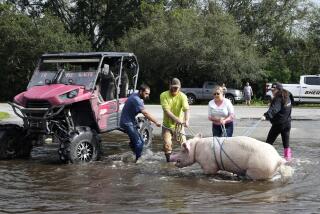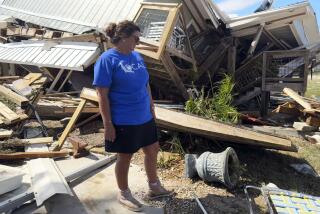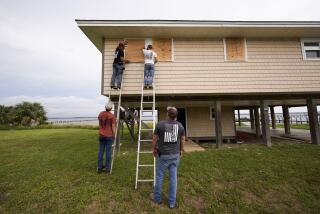Hurricane versus earthquake: A reporter contemplates natural disasters
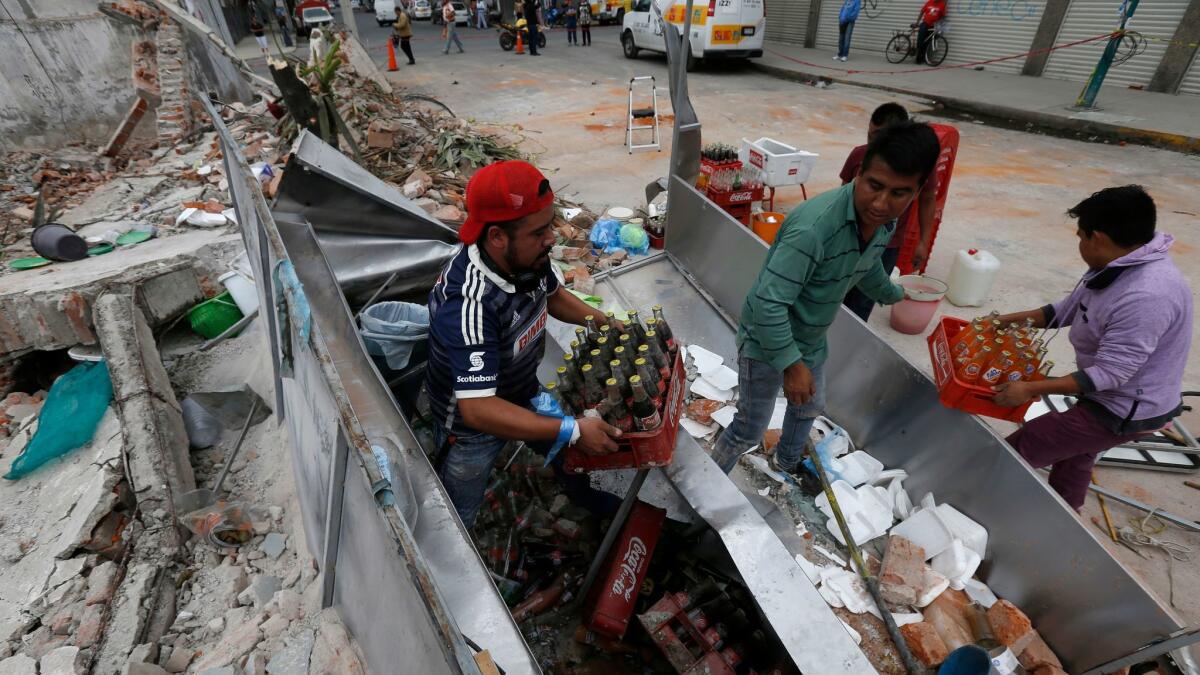
- Share via
I was headed to write about a hurricane in Miami when an earthquake struck in Mexico.
At first it felt like I was inexplicably losing my balance there on the sidewalk outside the terminal at the Mexico City airport. I had not yet entered the security checkpoint to embark upon what would surely be a prolonged, and quite possibly pointless, wait for a red-eye to Miami.
The folks from the airline, the Mexican carrier Volaris, called it a “rescue flight,” meant to ferry home Mexican citizens trapped in Miami as Hurricane Irma bore down on the Florida coast. The plane was supposed to leave at 1:30 a.m. Friday.
There was some time to kill before entering the claustrophobic bubble on the other side of the security checkpoint. I stepped outside on the sidewalk. Airports retain a certain allure, the sense of people and time in motion, of exotic destinations, despite the contemporary drudgery of lines, delays and searches. An abrupt feeling of vertigo overtook me as I absorbed the scene. I struggled not to fall over. It felt less like a jolt and more like walking on ice.
Just then, passengers, airport employees and others hastened onto the sidewalk from inside the airport. They displayed a pronounced sense of purpose as I wondered why I was teetering.
“Sismo!” they were shouting. Earthquake!
The crowd crossed the airport street and gathered on the median of the roadway, where nothing could fall on top of anybody. People planted themselves there, like a somewhat frazzled tour group waiting for their bus. People in Mexico know what to do when the earth shakes.
I gradually regained my equilibrium. I was relieved that there was a seismic explanation for my sudden wooziness. I wasn’t losing it after all, just not seeing the whole picture.
People were all abuzz about the sismo.
“Eight point one!” remarked one of the uniformed guys working the security line, incredulous at the earthquake’s magnitude. “That’s a big one!”
Early word Thursday night was that the damage in Mexico City was minor, despite the size of the quake and the fact that millions ran from their homes in fear. Televisions showed images of the iconic Angel of Independence swaying from its perch atop a stone column on Paseo de la Reforma.
Officials were still awaiting more definitive word on damage in the rural southwest. There was talk of tsunami waves along the country’s Pacific coast. The death toll near the epicenter in the southern part of the country would be 58 the next day.
But the temblor also took a psychological toll, as always, a shock to people’s sense of stability and permanence. In Mexico, reports of nervous breakdowns among survivors always seem to follow major quakes.
Inside the terminal, the earthquake buzz soon diminished. There was no word on the Miami flight. It seemed doubtful that the plane would leave. But, only three hours or so after its scheduled departure time, we were asked to board, groggy-eyed.
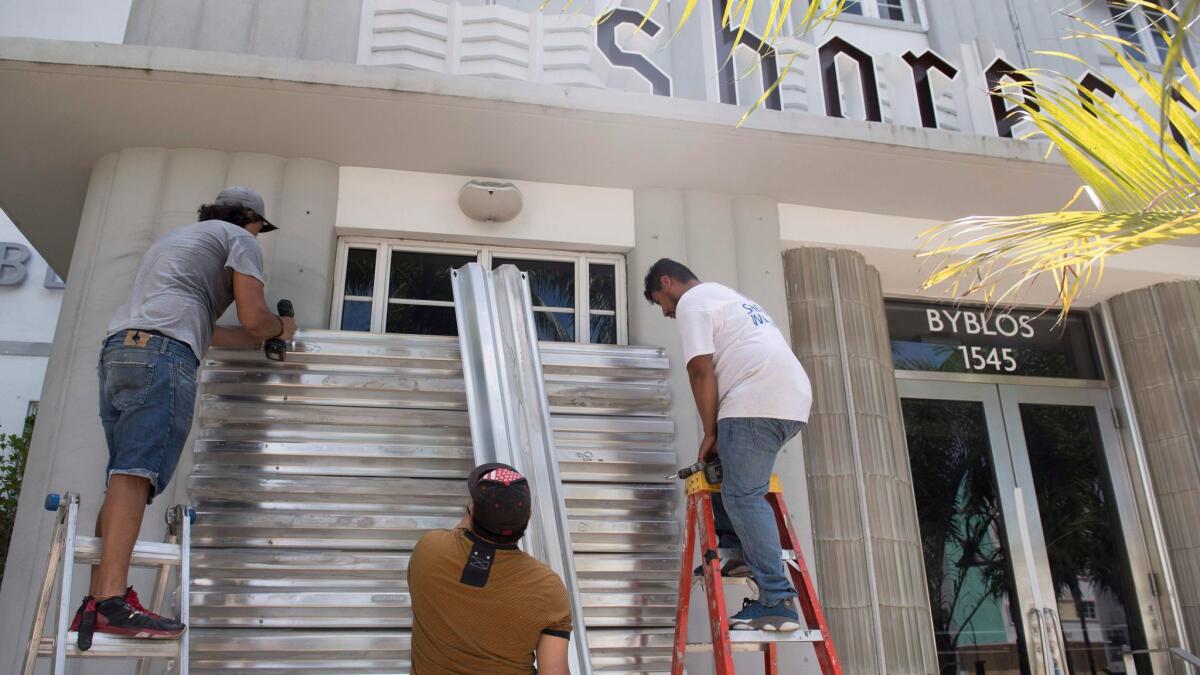
There were fewer than 10 passengers on the full-bodied jet to Miami. The crew outnumbered us. Someone asked whether we should spread out and distribute our weight somehow.
“Don’t worry about it,” a smiling stewardess decked out in purple replied. “Sit where you like.”
This turned out to be an especially turbulent voyage across the skies. Storms were battering Mexico, notably Hurricane Katia, which had already begun pummeling its Gulf Coast. I had the sense that we were flying directly over Katia, but didn’t want to ask. The pilots have probably done this kind of thing before, I imagined. We roller-coastered on.
Approaching Miami, the languid tableau emerging from the clouds looked like that of a lazy Sunday morning, not a rush-hour Friday. There was minimal traffic. We didn’t seem to pass over any of the highways clogged with multitudes evacuating before the arrival of Irma, signature images of dread.
The normally bustling Miami airport was becalmed. Only a few other flights had arrived at the international terminal. There was no line at immigration.
Outside, those emerging from flights seemed confused. There were few taxis, and hotel rooms were scarce. The balmy temperatures and sunny skies belied the imminent threat. TV screens warned of a “monster” storm.
I made my way to downtown Miami. The streets of gleaming glass towers were mostly empty. Plywood had been placed on many windows and storefronts. A camera crew lingered near the waterfront, preparing to film the anticipated tidal upheaval. Some folks jogged or walked dogs along the coast.
The few functioning hotels warned patrons that electricity, running water and elevators may not function in coming days, and advised against lingering by windows during high winds.
Earthquakes shake our world without notice, sudden jolts from the underworld. Hurricanes are visible disasters foretold, their buildups heralded in the news. Both fascinate and disturb, unwelcome reminders of our transient and sometimes trifling status on an unpredictable planet, shudders of mortality.
ALSO
After Irma, calls for help from the Caribbean: ‘The island is debris, that’s all it is’
Patience in short supply as desperation sets in among South Florida residents still in Hurricane Irma’s path
Faster than Harvey and bigger than Andrew, Irma is unlike any storm Florida has ever seen
More to Read
Sign up for Essential California
The most important California stories and recommendations in your inbox every morning.
You may occasionally receive promotional content from the Los Angeles Times.
